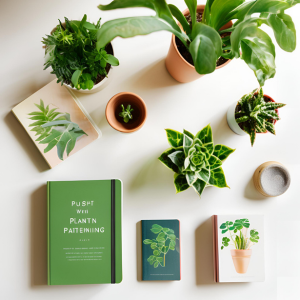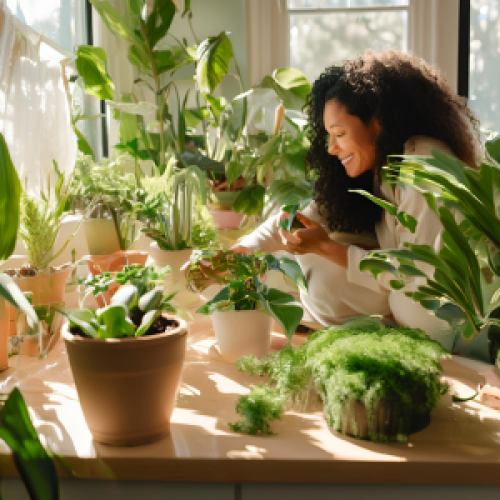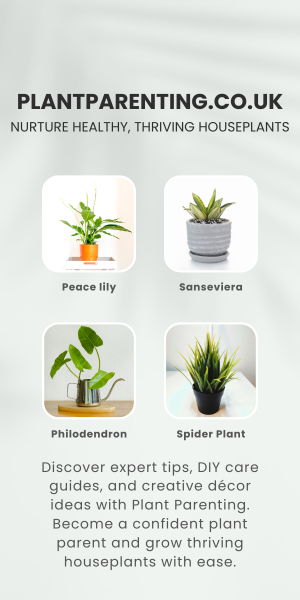A Comprehensive, Month-by-Month Guide to Indoor Plant Care
Indoor plants have become increasingly popular in homes and offices worldwide. Not only do they bring a sense of vibrancy and freshness to interior spaces, but they also help purify the air by removing toxins and releasing oxygen. Whether you have a small windowsill herb garden or a lush indoor jungle, understanding how to care for your plants throughout the year is essential to keep them thriving. This guide will provide a month-by-month overview of what you should do to ensure the health of your indoor plants, along with some essential tips on temperature, humidity, pruning, and pest control. By following these guidelines, you can enjoy healthy, flourishing greenery all year long.
January: Rest and Observation
- Monitor Water Requirements In the depths of winter (for many regions), most indoor plants enter a period of slower growth. Plants like pothos, snake plants, and dracaena may not need as much water as they do in warmer seasons. Overwatering in January is a common mistake that can lead to root rot. Observe the top inch of soil; only water if it feels dry.
- Check for Signs of Stress Because of the lower light levels and cooler temperatures, some plants might drop a few leaves. This is often normal, but keep an eye on those that lose leaves excessively or develop yellow or brown spots. Adjust placement if needed to provide better light.
- Maintain Humidity Indoor heating systems can drastically reduce humidity, leading to dry leaf tips or crispy edges. Consider placing a tray of water near heat sources, grouping plants together, or using a humidifier to keep humidity at an optimal level.
- Clean and Dust January is also a good time to gently wipe the leaves of your houseplants with a soft, damp cloth. Dust that accumulates on leaves can block out crucial light and hinder photosynthesis.
February: Early Preparations
- Start Light Feeding Although plant growth is still slow, some species—such as African violets or indoor citrus—may show signs of budding or flowering. To support these early growers, consider using a diluted, balanced liquid fertilizer at half-strength once a month.
- Increase Light Exposure The daylight hours begin to lengthen in late winter. Move sun-loving plants, like succulents and cacti, closer to bright windows. Ensure they still receive a few hours of direct sunlight if possible.
- Inspect for Pests Indoor environments can still harbor common pests such as spider mites, mealybugs, and aphids, which thrive in warm, dry indoor air. Examine both sides of leaves and treat any infestation early with insecticidal soap or neem oil.
- Prepare for Growth As February progresses, plants may start to put out new leaves, indicating that their dormant period is ending. Keep track of which plants are showing signs of renewed growth, as these might require more frequent watering and a slight increase in fertilizer application.
March: Spring Awakening
- Repot If Needed Early spring is an ideal time to check your plants’ roots. If roots are circling the bottom or sides of the pot (root-bound), or if water is draining too quickly, it may be time to move up one pot size. Repotting now gives plants time to settle before active growth begins in earnest.
- Begin Regular Feeding With brighter days, most houseplants enter a significant growth phase. Start feeding them once or twice a month with a balanced houseplant fertilizer. Always follow instructions on the fertilizer label, as over-fertilizing can do more harm than good.
- Adjust Watering Schedule As plants emerge from dormancy, they will need more water. Increase watering frequency slightly, but remain cautious. Overwatering remains one of the most common mistakes; always feel the soil before watering.
- Pruning and Grooming Prune dead or yellowing leaves to direct the plant’s energy into new growth. You can also shape some plants by trimming leggy or excessive stems. Cleaning up your plant’s appearance encourages healthier growth and better airflow around foliage.
April: Embrace Growth
- Optimize Sunlight April’s increase in sunlight can help jumpstart robust growth. Be mindful, however, of sudden intense sunlight through windows, which can scorch delicate leaves. Gradually acclimate plants that have been kept in low light during winter to brighter conditions.
- Check Soil Condition The soil might be compacted from a winter of reduced watering. Gently loosen the top layer of soil with your fingers or a fork to promote better aeration. This helps water reach the roots more effectively.
- Implement Pest Control Measures Warmer temperatures can encourage pests to proliferate. Maintain a consistent schedule for inspecting leaves, especially new growth. Promptly remove or treat any infected foliage and isolate plants with apparent pest issues.
- Humidity Considerations If you notice your indoor environment is becoming dry again due to the changing season or indoor climate controls, continue to mist plants that appreciate higher humidity and consider using a pebble tray under pots to keep moisture levels stable.
May: Vigorous Growth and Maintenance
- Increase Feeding Frequency By May, plants often accelerate their growth. Some flowering indoor plants, like peace lilies or hoyas, also begin to form buds. Consider fertilizing once every two weeks with a balanced, water-soluble fertilizer unless your plant prefers a different schedule.
- Support Climbing or Vining Plants If you have pothos, monstera, or philodendron types that start vining more in warmer months, consider adding a moss pole or trellis for support. This can improve the overall look of your plant and encourage larger, healthier leaves.
- Water Mindfully While growth is faster, it’s still crucial to avoid saturating the soil unnecessarily. Overwatering is a year-round concern, so check that the topsoil is adequately dry before watering. Ensure pots have good drainage.
- Temperature Consistency Keep an eye on temperature fluctuations as warm days and cool nights set in. Most houseplants do best within a stable range of 65 to 80°F (18 to 27°C). If it gets too warm indoors, try placing heat-sensitive plants away from direct afternoon sun or near a slightly open window for ventilation.
June: Transition to Summer
- Consider Outdoor Placement Many indoor plants benefit from a brief vacation outdoors in late spring or early summer, provided they are shielded from direct, harsh midday sun and extreme weather. Gradually move them outside over several days to avoid shock.
- Maintain Fertilizer Routine Continue using a balanced fertilizer once or twice a month, as plants are typically in their peak growing stage. For flowering houseplants, consider a bloom-boosting fertilizer higher in phosphorus to support flower production.
- Monitor Water and Sun Exposure Outdoor conditions can dry out pots more quickly. Whether your plants remain indoors or head outside, keep a closer eye on moisture levels. Early signs of dehydration include wilting, drooping leaves, or dull leaf color.
- Pest Prevention If placing plants outdoors, carefully inspect them before bringing them back inside. Outdoor exposure can introduce new pests like thrips, aphids, or even slugs. Regular checks and preventive measures will help maintain healthy foliage.
July: Peak Growth and Care
- Stay on Top of Watering July typically means higher temperatures and lower humidity in many regions. Water more frequently and mist foliage to reduce the risk of leaf dehydration, especially for humidity-loving plants like ferns and calatheas.
- Consider Pruning for Shape If your indoor plant has become unruly or leggy, do some light pruning to maintain its form. This not only keeps the plant looking its best but also encourages bushier growth.
- Fertilizer Adjustments While a balanced fertilizer still works for most plants, pay attention to any signs of over-fertilization such as leaf tip burn or crusty residue on the soil surface. If you notice these, flush the soil with water or reduce the fertilizer concentration.
- Watch for Heat Stress Indoor temperatures can soar during heatwaves, especially in rooms with large windows. Adjust blinds or curtains to shield plants from the harshest midday sun. Some species, like begonias or prayer plants, appreciate a bit of afternoon shade.
August: Maintaining Plant Health
- Continue Regular Watering As the summer heat persists, keep checking the soil moisture. Be sure not to let the soil go bone dry for too long, especially for tropical species that thrive with more consistent moisture.
- Check for Pest Infestations Midsummer is a notorious time for spider mites and other pests. Continue weekly inspections; look for small webs or tiny moving spots. Early detection helps you avoid major damage.
- Ventilation and Airflow Good air circulation around your plants can reduce the likelihood of fungal diseases and pests. If possible, gently run a fan in the room or periodically open windows to refresh the indoor air.
- Maintain Fertilizer Schedule You can continue fertilizing at the same rate as in previous months unless you see signs of over-fertilization. Many plants will keep putting out new growth until temperatures begin to cool.
September: Preparing for Seasonal Transition
- Gradual Reduction in Water As days start to shorten, some plants will naturally slow their growth. Begin to reduce watering for plants that show signs of reduced activity. Others, like certain succulents, might continue to thrive if they receive adequate sunlight.
- Indoor Relocation If you have been placing plants outdoors during the summer, it’s time to bring them back indoors. Inspect them thoroughly for pests. Gently hose them down or wipe leaves if needed before reintroducing them to your home environment.
- Plan for Repotting Late-Season Early fall can be a good time to repot if you missed the spring window. If you notice plants becoming root-bound or water rushing out too quickly, consider a one-size-larger pot. However, proceed with caution—some species prefer spring repotting.
- Slow Down on Fertilizer Once daylight noticeably decreases, cut back on the frequency and strength of fertilizer. Overfeeding can harm plants that are beginning to rest.
October: Early Dormancy Care
- Adjust Lighting With fewer hours of natural sunlight, consider using grow lights for plants that require bright conditions year-round, such as succulents or orchids. Position grow lights about 6 to 12 inches away from the foliage to mimic the sun’s intensity.
- Monitor Temperature As outdoor temperatures drop, maintain a stable indoor environment. Keep houseplants away from cold drafts and ensure windows are well-sealed.
- Prepare for Leaf Drop Some plants, particularly those sensitive to lower light levels, might shed leaves. Don’t be alarmed if your fiddle-leaf fig, for instance, drops a few leaves; it’s adjusting to seasonal changes.
- Focus on Pest Prevention Fall can still harbor pests. Maintain your inspection routine. Keep a bottle of insecticidal soap or neem oil on hand for quick treatment. If you spot any unwelcome critters, isolate the affected plant to protect others nearby.
November: Steady Maintenance
- Reduce Watering Further Many indoor plants have significantly slowed their growth by November. Water only when the topsoil is dry, and remember that cooler temperatures reduce evaporation rates. Be especially cautious with cacti and succulents.
- Check Humidity Levels In many homes, heating systems are in use by November, which can create very dry air. Increase humidity around your plants with pebble trays, humidifiers, or by grouping plants close together.
- Minimal Fertilizer Unless you have a plant that specifically grows or flowers in winter (like some holiday cacti or certain orchids), most plants need little to no fertilizer during this time. Over-fertilizing can stress plants.
- Inspect Potting Mix and Roots Once growth slows, it’s easier to see if a plant is struggling. Gently tip the pot to check for rotting roots if you suspect overwatering, or look for dryness in the root ball if you suspect under-watering.
December: Dormant Season and Careful Monitoring
- Adjust for Festive Decorations If you’re decorating your home for the holidays, be mindful not to place plants too close to heat sources like radiators, fireplaces, or holiday lights that generate heat. Keep them away from high-traffic areas where they might get jostled.
- Light Check December’s short days mean your indoor plants will have even less natural light. Ensure they’re placed in the brightest area of your home or supplement with grow lights as needed.
- Water Sparingly Growth is minimal during December. Most tropical plants only need watering when about half the potting mix is dry. Succulents and cacti might only require a small drink once or twice the entire month (depending on the environment).
- Celebrate New Growth Cycles Even though December can be considered a period of rest, some houseplants—like poinsettias, Christmas cacti, or amaryllis—are in their prime, showcasing vibrant leaves or blooms. Enjoy this seasonal color and continue giving them moderate care without overdoing fertilizer or water.
Final Thoughts
Caring for indoor plants is a rewarding journey that provides a serene connection to nature within the comfort of your home. By following a month-by-month approach, you can stay on top of water requirements, fertilizing schedules, pruning, and pest control. Seasonal shifts in temperature and daylight hours mean your indoor oasis will constantly change, so remain observant and adjust care practices accordingly. Each plant species has its own unique preferences, so take the time to understand their specific needs. With consistent observation and proper maintenance, you can enjoy healthy, vibrant houseplants year-round.








No comments, be the first to comment